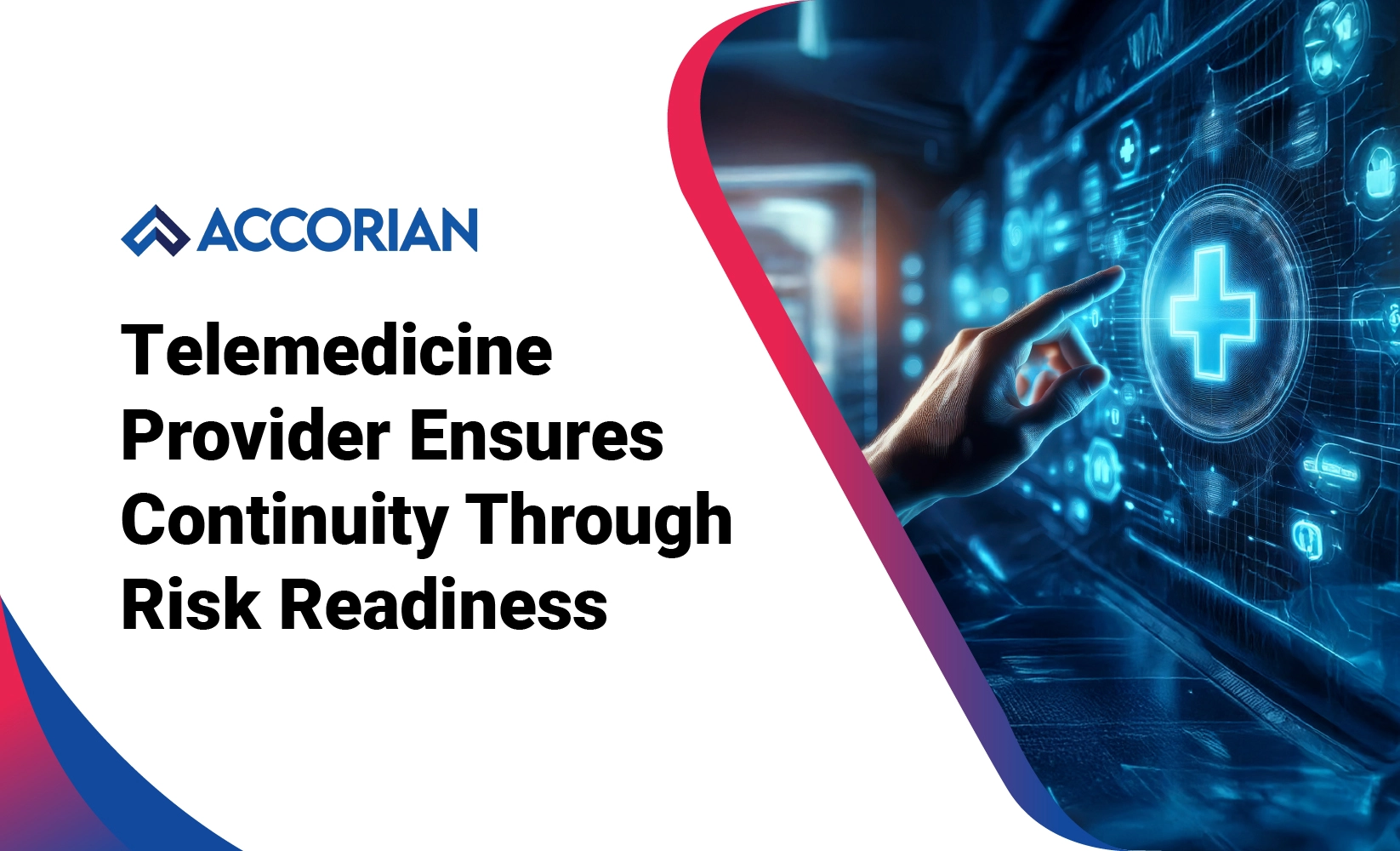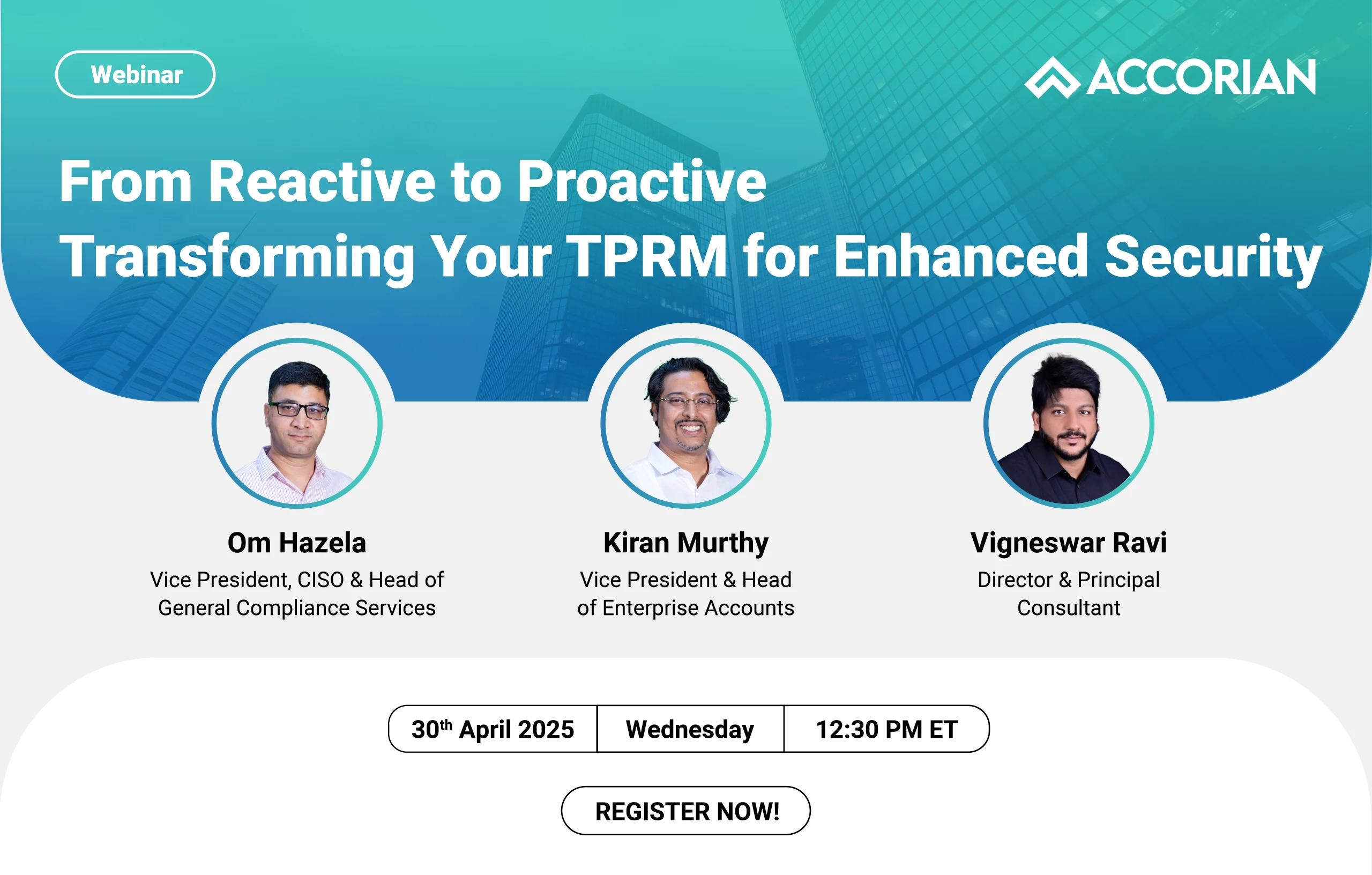Risk Assessment
Strengthening Security Through Risk Assessments
A Security Risk Assessment helps organizations identify, analyze, and prioritize risks across people, processes, and technology while evaluating the effectiveness of existing policies & controls. It enables CXOs and security leaders to understand their security posture, align risks within acceptable ranges, and avoid surprises in an evolving security landscape. Accorian has a proven methodology to identify your vendors, categorize criticality and assess risks associated with them. Leveraging our platform GoRICO we can quickly help managed your vendor risk.
Why Do You
Need Risk Assessment?
Why Do You Need Risk Assessment?
Risk assessments are an essential part of risk management, providing a comprehensive view of potential threats and vulnerabilities in an organization. They empower organizations to proactively address evolving risks and maintain a robust security posture. Conducted annually, these assessments are mandatory under standards like HITRUST, ISO 27001, SOC 2, HIPAA, and PCI DSS. By driving compliance and fortifying security measures, they establish a strong foundation for effective risk mitigation and long-term operational resilience.
Types of Risk Assessment
01
Enterprise Risk Assessment
This comprehensive assessment identifies and evaluates risks that could impact the entire organization, including financial, operational, strategic, and compliance risks. It helps organizations understand their risk exposure and prioritize mitigation efforts at the enterprise level.
02
HIPAA Risk Assessment
Focused on healthcare organizations, this assessment ensures compliance with the Health Insurance Portability and Accountability Act (HIPAA). It identifies risks related to the confidentiality, integrity, and availability of protected health information (PHI), helping organizations implement safeguards to protect sensitive data.
03
NIST 800-30 Risk Assessment
The NIST framework includes a systematic procedure for discovering, analyzing, and managing risks in information systems. It assists enterprises in taking a methodical approach to managing cybersecurity risks and complying with NIST guidelines.
04
Questionnaire-Based Risk Assessment
It Uses pre-designed questions to gather data on potential risks from stakeholders. It identifies weaknesses by asking targeted questions about existing processes, technologies, and controls, making it a low-cost and efficient risk assessment tool.
05
Vendor Risk Assessment
It evaluates risks connected with third-party vendors and suppliers. It focuses on determining if vendors adhere to security and compliance standards, ensuring that outsourcing partners do not bring risks that could jeopardize the organization’s security posture or regulatory compliance.
Elements of Risk Management
Risk Management
Scope
The scope of a risk assessment may range from the whole organization to specific sections, individual systems, or even particular components. In technological domains, it also includes vulnerability assessments to quantify threats. Regular assessments, especially when using incremental approaches, ensure comprehensive results while addressing evolving security needs and significant changes. It ensures defense, compliance, continuity, and cost savings while protecting assets and trust.
Identification
It refers to the process that entails identifying, assessing, and addressing potential threats on the IT systems and data stored by the organization. It identifies potential threats like malware, data breaches, or system failures while determining their likelihood of occurrence and impact by formulating strategies to reduce, transfer, accept, or avoid the threats. This comprises security controls, training, response plans, and monitoring in order to adjust to emerging threats ensuring business continuity, compliance, and stronger security.
Treatment
Risk treatment entails addressing recognized risks and vulnerabilities through acceptance, mitigation, or avoidance. Acceptance refers to retaining a known risk within the organization's tolerance; mitigation minimizes risks through security measures and training; and avoidance eliminates actions that provide unacceptable risks.
Direct & In-direct - Outcomes & Benefits
Risk Assessment:
A Long-Term Security Strategy Component
Accorian will provide a comprehensive study of how the information security program of a firm compares to the NIST Cyber Security Framework. These include:
Relevant federal, state, or local legislation, and other legally enforceable restrictions
The expense of installing effective controls in comparison to the potential damage of not applying them
The institutional aims and objectives
Operational needs and limits
The costs that are anticipated to occur through one or maybe more security failures
Continuous improvement through ongoing risk management is the most likely approach to achieving a ‘state of full security.’
Why Choose Accorian?
Accorian provides a variety of security risk assessments to customers that fulfill the criteria of numerous standards such as HITRUST, PCI-DSS, HIPAA, ISO 27001, and others. Our time-tested systematic risk assessment technique helps customers identify their risks while providing a library of asset types, threats, vulnerabilities, and dangers that are all connected to each other. Consequently, we enable our customers to finish their evaluations in record time. All of this, well without the burden of beginning from zero and navigating unfamiliar territory without the assistance of an expert.
Accorian's Risk Assessment Experts provide unparalleled depth in their expertise on risk identification and analysis across people, process, and technology. Knowledge of industry standards such as ISO 27001, SOC 2, HIPAA, PCI DSS, and others ensures well-tailored assessments that truly enhance your organization's security posture. Through actionable insights, we power businesses to address vulnerabilities proactively, ensure compliance, align risks with organizational goals and thereby enhance resilience within an always-evolving threat landscape.






